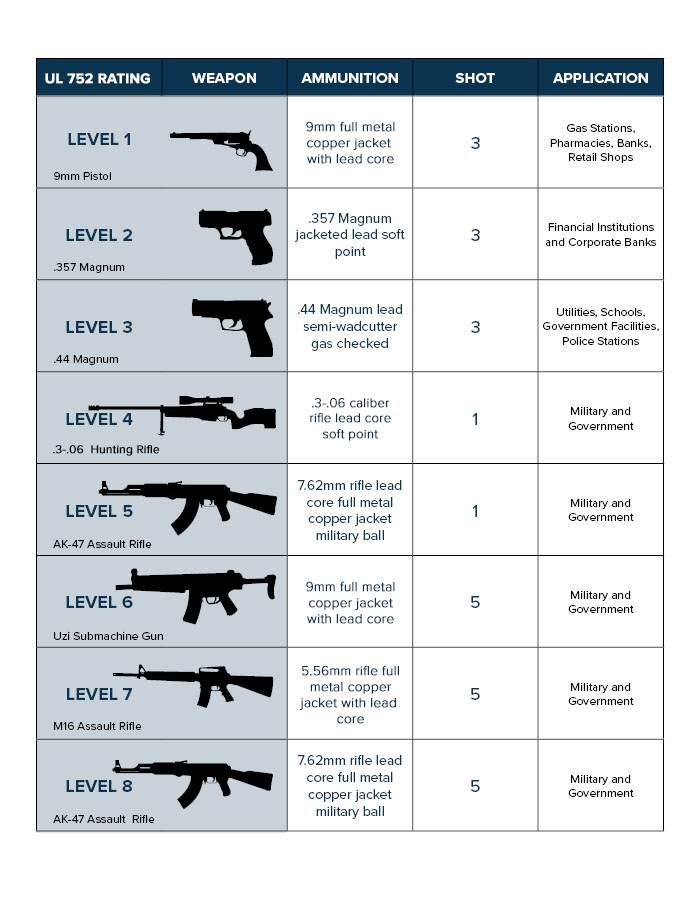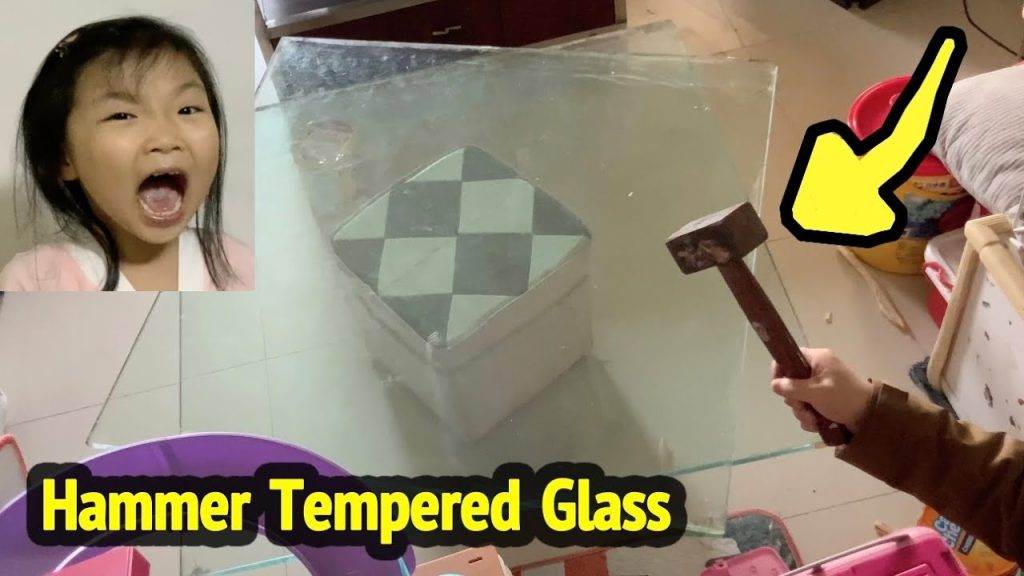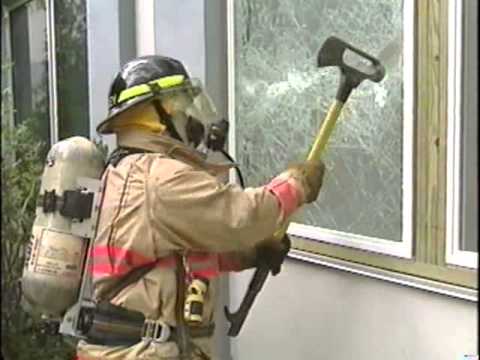We’ve all seen those action movies where a hero shoots at a bulletproof window and it miraculously doesn’t shatter. But have you ever wondered just how many bullets it actually takes to break through that seemingly impenetrable barrier? Well, get ready for some surprising answers. In this article, we’ll take a closer look at the fascinating world of bulletproof windows and uncover the secrets behind their extraordinary strength. From the materials used to their construction, we’ll explore the science behind these protective barriers and discover if there’s ever a breaking point. So, fasten your seatbelts and prepare to be amazed by the incredible resilience of bulletproof windows.
This image is property of qph.cf2.quoracdn.net.
Factors Affecting Bulletproof Window Resistance
Window Material
The type of material used in the construction of a bulletproof window plays a significant role in its resistance to bullets. Common materials used for bulletproof windows include laminated glass, polycarbonate, acrylic, glass-clad polycarbonate, and specialized coatings. Each material has its own unique properties that affect its ability to withstand bullet impact.
Window Thickness
The thickness of a bulletproof window is another important factor in determining its resistance. Thicker windows are generally more effective at stopping bullets, as they provide a greater barrier for the projectile to penetrate. However, there is a trade-off between thickness and visibility, as thicker windows may reduce clarity and obstruct vision.
Bullet Velocity
The velocity at which a bullet travels can greatly impact its ability to penetrate a bulletproof window. Higher velocity bullets have more kinetic energy, which gives them greater force upon impact. As a result, bulletproof windows must be designed to withstand the specific velocities that they are likely to encounter in real-world situations.
Bullet Caliber
The caliber of a bullet refers to its diameter, and different calibers can have varying effects on bulletproof window resistance. Larger caliber bullets generally have a greater mass and energy, making them more challenging to stop. It is crucial to consider the types of bullets that are prevalent in the intended application when selecting a bulletproof window.
Bullet Type
The design and construction of a bullet can also influence its ability to penetrate a bulletproof window. Full metal jacket (FMJ) bullets, which have a lead core encased in a harder metal shell, are less likely to deform upon impact and may be more effective at penetrating. On the other hand, hollow point bullets, which have a soft lead tip that expands upon impact, tend to be less penetrative and may be stopped more easily by a bulletproof window.
Testing Methods for Bulletproof Windows
Lab Testing
Bulletproof windows undergo rigorous testing in laboratory settings to evaluate their resistance to bullets. These tests simulate real-world scenarios by firing bullets at windows using specialized equipment. The windows are evaluated based on criteria such as the number of shots they can withstand, the level of deformation or penetration, and overall structural integrity.
Field Testing
Field testing involves subjecting bulletproof windows to real-world shooting incidents or controlled environments that replicate high-risk situations. This testing provides valuable insights into the actual performance of the windows when exposed to live ammunition. Field testing allows for a more comprehensive evaluation of the effectiveness and durability of bulletproof windows in real-world scenarios.
This image is property of qph.cf2.quoracdn.net.
Common Types of Bulletproof Windows
Laminated Glass Windows
Laminated glass windows consist of multiple layers of glass bonded together with a plastic interlayer, usually made of polyvinyl butyral (PVB). The plastic interlayer holds the glass together even after it breaks, preventing shards from dispersing and maintaining the integrity of the window. Laminated glass windows are commonly used in applications that require both bullet resistance and transparency, such as banks and government buildings.
Polycarbonate Windows
Polycarbonate windows are made of a tough, transparent plastic that is known for its high impact resistance. They are significantly lighter than glass windows of the same thickness but still provide excellent bullet resistance. Polycarbonate windows are often used in applications where weight is a concern, such as armored vehicles and aircraft.
Acrylic Windows
Acrylic windows, also known as plexiglass, are another type of transparent plastic used for bulletproof windows. They offer good bullet resistance, although not as high as laminated glass or polycarbonate. Acrylic windows are valued for their optical clarity, impact resistance, and ease of fabrication. They find applications in buildings and vehicles where bullet resistance is required, but weight considerations are less critical.
Glass-Clad Polycarbonate Windows
Glass-clad polycarbonate windows combine the benefits of both materials to offer superior bullet resistance. They consist of a layer of polycarbonate sandwiched between layers of glass, providing excellent clarity and impact resistance. Glass-clad polycarbonate windows are commonly used in high-security applications, such as government buildings and VIP residences.
Bulletproof Film Coatings
Bulletproof film coatings are a cost-effective way to enhance the bullet resistance of existing windows. These coatings are typically made of multiple layers of polyester film that are applied to the window surface. The film adheres to the glass, providing an additional barrier against bullets and preventing shards from scattering if the window is struck. Bulletproof film coatings are commonly used in residential and commercial buildings.
Bullet-Resistant Polycarbonate Panels
Bullet-resistant polycarbonate panels are thick, multi-layered sheets of polycarbonate that offer high levels of bullet resistance. These panels are designed to be retrofitted onto existing windows, providing an additional layer of protection against bullets. Bullet-resistant polycarbonate panels are commonly used in law enforcement and security applications.
Bullet Resistance Levels
National Institute of Justice (NIJ) Standard
The National Institute of Justice (NIJ) sets the standards for bullet resistance levels in the United States. The NIJ standard categorizes bulletproof windows into different levels based on their ability to stop bullets of increasing velocity and energy. The highest level of protection, Level IV, is capable of stopping armor-piercing rounds.
European Standard (EN 1063)
The European Standard EN 1063 establishes similar classifications for bulletproof windows in Europe. The standard classifies windows based on the types and velocities of bullets they can withstand. The highest classification, BR7, is capable of withstanding multiple shots from high-velocity rifles.
UL752 Standard
The UL752 Standard, developed by Underwriters Laboratories, provides bullet resistance ratings for windows in the United States. It classifies windows based on their ability to stop bullets of varying calibers and velocities. The UL752 Standard is widely accepted and used by various industries, including law enforcement, government, and commercial sectors.

This image is property of www.quikserv.com.
Bulletproof Window Applications
Law Enforcement and Security
Bulletproof windows play a critical role in providing protection for law enforcement officers and security personnel. They are commonly used in police vehicles, armored trucks, and secure facilities to safeguard against gunfire and potential attacks. Bulletproof windows enhance the safety and effectiveness of law enforcement operations, allowing officers to perform their duties with confidence.
Banks and Financial Institutions
Banks and financial institutions face unique security challenges, making bulletproof windows an essential component of their physical security measures. Bulletproof windows are installed in teller areas, cash handling rooms, and other high-risk locations to protect personnel and assets from threats such as armed robberies or active shooters. These windows provide a secure environment for employees and customers, instilling trust and confidence in the financial institution.
Embassies and Government Buildings
Embassies and government buildings often require high levels of security to protect personnel, sensitive information, and diplomatic interests. Bulletproof windows are an integral part of the security systems in these facilities, providing protection against potential terrorist attacks or siege situations. By enhancing the physical security infrastructure, bulletproof windows contribute to the safety and well-being of embassy staff and government officials.
Residential and Commercial Buildings
In recent years, there has been an increasing demand for bulletproof windows in residential and commercial buildings. Concerns about personal safety and protection against threats have led homeowners and business owners to invest in robust security measures, including bulletproof windows. These windows serve as a deterrent and provide peace of mind, ensuring the safety of occupants and valuable assets.
Real-World Scenarios and Case Studies
Shooting Incidents and Bulletproof Window Performance
Numerous shooting incidents have highlighted the importance of bulletproof windows in saving lives and preventing further casualties. Case studies have shown that properly installed and tested bulletproof windows can withstand multiple shots from various firearms, effectively stopping bullets and minimizing the potential for injury or fatality. These real-world scenarios emphasize the critical role that bulletproof windows play in high-risk environments.
Assessing Effectiveness in High-Risk Environments
Bulletproof windows are regularly evaluated in high-risk environments to assess their effectiveness and identify areas of improvement. Continual testing and assessment allow manufacturers and end-users to stay abreast of advancements in bulletproof window technology and ensure that the windows continue to meet evolving security needs. By analyzing real-world performance, stakeholders can make informed decisions when selecting bulletproof windows for their specific applications.

This image is property of www.wikihow.com.
Improving Bulletproof Window Performance
Advancements in Window Technology
Advancements in window technology have led to the development of more resilient and effective bulletproof windows. Manufacturers are constantly researching and innovating to enhance the strength, clarity, and overall performance of these specialized windows. New materials, such as advanced polymers and glass laminates, are being utilized to improve bullet resistance while maintaining visibility and aesthetic appeal.
Multilayered Window Systems
Multilayered window systems, featuring a combination of different materials and thicknesses, offer enhanced protection against bullet penetration. By strategically layering materials with varying properties, these systems can effectively disperse the energy of an impacting bullet, preventing it from penetrating the window. Multilayered window systems are engineered to maximize bullet resistance while minimizing weight and visual distortion.
Specialized Coatings
Specialized coatings can significantly enhance the bullet resistance of windows. Coatings, such as hard coatings or anti-spall coatings, are applied to the surface of the window to reduce the risk of penetration and mitigate the effects of bullet impact. These coatings can strengthen the window, prevent shards from scattering, and increase its overall durability. By incorporating specialized coatings, bulletproof windows can provide an additional layer of protection against ballistic threats.
Factors to Consider When Purchasing Bulletproof Windows
Cost
The cost of bulletproof windows varies depending on factors such as the material, thickness, size, and level of bullet resistance required. It is important to consider the budgetary constraints when selecting bulletproof windows and to balance cost-effectiveness with the desired level of protection. While cost is a significant factor, it should not be the sole determining factor, as the safety and security of individuals and assets are paramount.
Certifications and Standards
When purchasing bulletproof windows, it is crucial to ensure that they meet recognized certifications and standards. Certifications from reputable organizations such as the National Institute of Justice (NIJ), Underwriters Laboratories (UL), and the European Standard (EN) provide independent validation of a window’s bullet resistance capabilities. By selecting certified windows, customers can have confidence in the performance and reliability of their bulletproof windows.
Customization Options
Bulletproof windows can be customized to fit specific requirements and preferences. Various customization options are available, including frame finishes, tinting, decorative patterns, and sizes. These options allow for integration with existing architectural designs and aesthetics, ensuring that bulletproof windows seamlessly blend with the surrounding environment. Customers should consider the customization options available to tailor the windows to their unique needs.
This image is property of qph.cf2.quoracdn.net.
Maintaining and Repairing Bulletproof Windows
Regular Maintenance
Regular maintenance is essential to ensure the longevity and performance of bulletproof windows. Cleaning the windows with gentle, non-abrasive cleaners and soft cloths helps to maintain transparency and remove any surface contaminants. Inspecting the window frames, seals, and hardware for damage or wear is important to identify potential issues and address them proactively. Routine maintenance schedules can help prevent minor issues from escalating into more significant problems.
Repairing Damaged Windows
In the event of damage to a bulletproof window, it is crucial to engage professionals experienced in repairing or replacing these specialized windows. Prompt and proper repair is essential to restore the bullet resistance of the window and maintain its integrity. Repairs may involve replacing damaged glass or polycarbonate layers, resealing frames, or applying specialized coatings. Engaging certified technicians ensures that repairs are carried out in accordance with industry standards.
Conclusion
The complexities of bulletproof window resistance are influenced by various factors, including window material, thickness, bullet velocity, caliber, and type. Thorough lab testing and field testing methods provide valuable insights into the performance and durability of bulletproof windows. Different types of bulletproof windows, such as laminated glass, polycarbonate, acrylic, and glass-clad polycarbonate, offer varying levels of bullet resistance and find applications in law enforcement, security, financial institutions, and residential and commercial buildings.
Bullet resistance levels set by organizations such as the National Institute of Justice, European Standard, and Underwriters Laboratories ensure that bulletproof windows meet specific criteria for stopping bullets of varying velocities and calibers. Real-world scenarios and case studies demonstrate the effectiveness of bulletproof windows in preventing injury and saving lives. Ongoing advancements in window technology, multilayered window systems, and specialized coatings further improve the performance and resilience of bulletproof windows.
Factors to consider when purchasing bulletproof windows include cost, certifications, and customization options. Regular maintenance and proper repair are essential for the longevity and optimal functioning of bulletproof windows. The importance of standardization and testing cannot be overstated, as they ensure the reliability and effectiveness of bulletproof windows in providing protection against ballistic threats. With the right selection, maintenance, and adherence to standards, bulletproof windows can significantly enhance safety and security in a wide range of applications.




